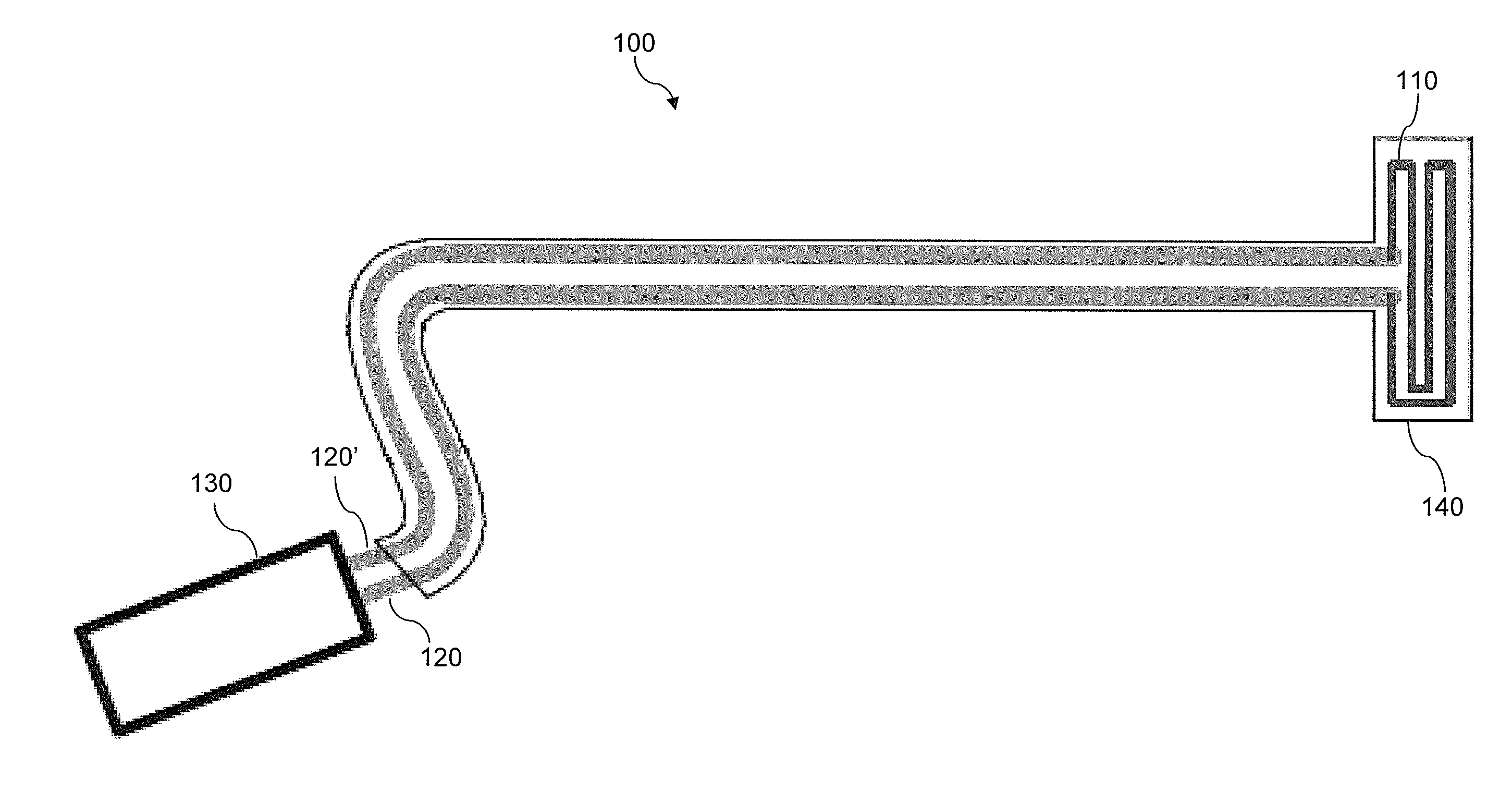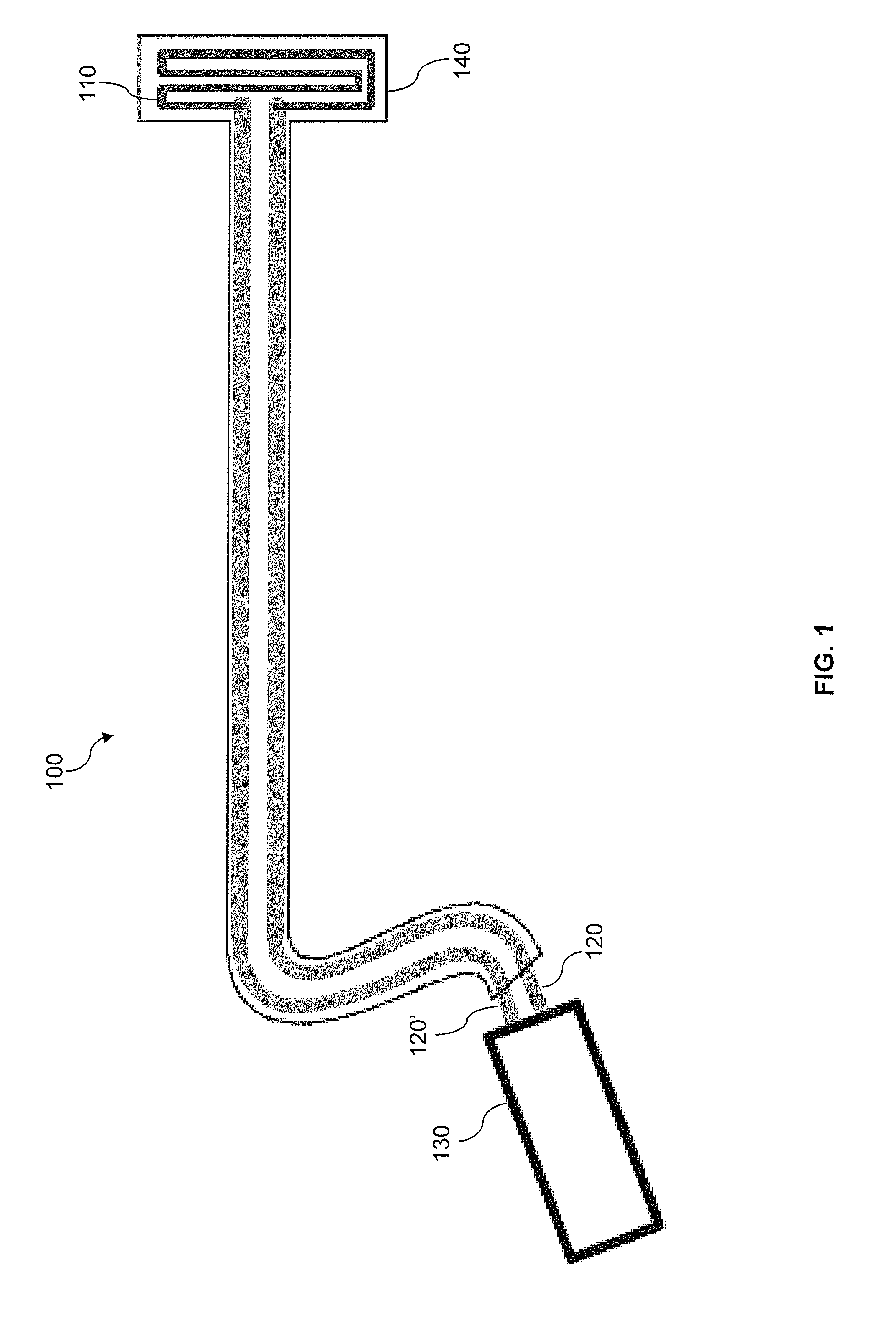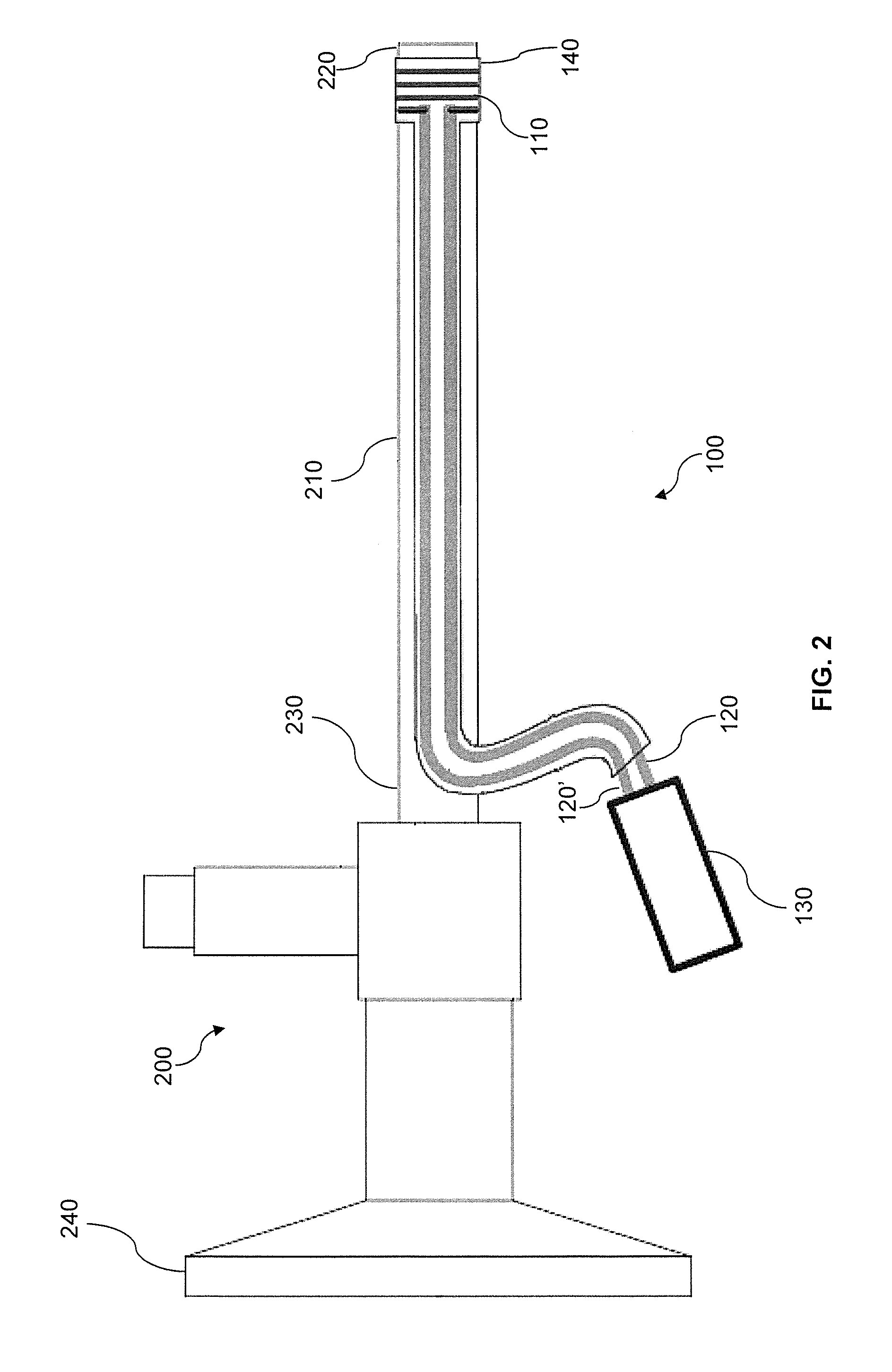Telescope Antifogging and Defogging System
a technology of anti-fogging and defogging, which is applied in the field of endoscopes, can solve the problems of reducing durability and dependability, reducing the durability and dependability of medical instruments incorporating windows or lenses and employed in body cavities, and reducing the durability of the instrumen
- Summary
- Abstract
- Description
- Claims
- Application Information
AI Technical Summary
Benefits of technology
Problems solved by technology
Method used
Image
Examples
Embodiment Construction
[0033]FIG. 1 illustrates an example endoscope defogging and anti-fogging device 100 according to aspects of the invention.
[0034]Device 100 includes a heating element 110, electrical conductors 120, 120′, power source 130, and insulation 140.
[0035]Heating element 110 may be a wire coil, trace, film, or other suitable structure and may be made from a material which heats when a sufficient current is applied. Suitable materials include Nichrome, Constantan, Carbon, Iron, semiconducting ink, or any other material or alloy commonly used in constructing resistors.
[0036]Electrical conductors 120 and 120′ are wires or traces made from a conducting material suitable for delivering power to resistive heating element 110 while maintaining a reasonably low level of resistive heating and voltage drop within electrical conductors 120 and 120′
[0037]Power source 130 supplies power to the heating element 110 via conductors 120, 120′. Heating element 110 may be self-limiting such that regardless of t...
PUM
 Login to View More
Login to View More Abstract
Description
Claims
Application Information
 Login to View More
Login to View More - R&D
- Intellectual Property
- Life Sciences
- Materials
- Tech Scout
- Unparalleled Data Quality
- Higher Quality Content
- 60% Fewer Hallucinations
Browse by: Latest US Patents, China's latest patents, Technical Efficacy Thesaurus, Application Domain, Technology Topic, Popular Technical Reports.
© 2025 PatSnap. All rights reserved.Legal|Privacy policy|Modern Slavery Act Transparency Statement|Sitemap|About US| Contact US: help@patsnap.com



